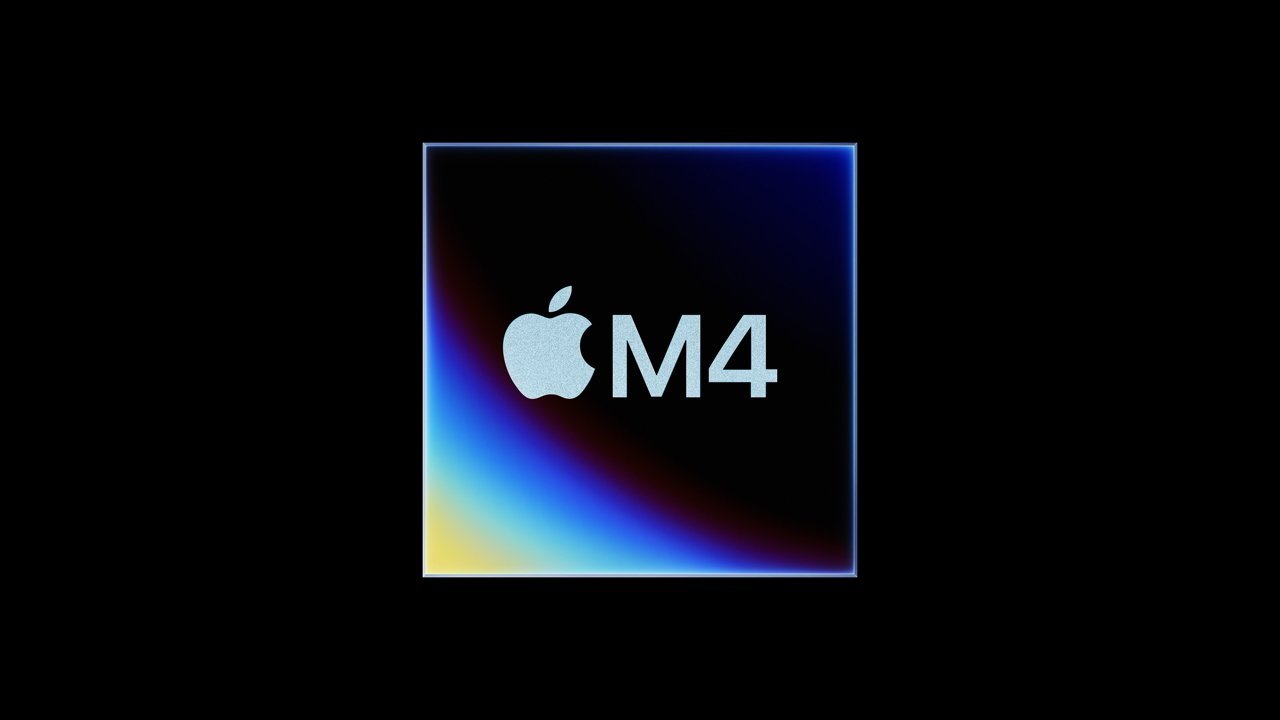Originally appeared here:
4 things you can do in the ChatGPT Windows app that it does better than Copilot
Blog
-
4 things you can do in the ChatGPT Windows app that it does better than Copilot
Ways the ChatGPT app on Windows outperforms Copilot. -
Tether CEO slams federal probe claims: ‘No knowledge of any such investigations’
Tether faces an investigation over alleged ties to illegal activities and sanctioned entities.
Despite the scrutiny, Tether explores opportunities for growth in the commodity sector.Stablec
The post Tether CEO slams federal probe claims: ‘No knowledge of any such investigations’ appeared first on AMBCrypto.
Tether CEO slams federal probe claims: ‘No knowledge of any such investigations’Tether CEO slams federal probe claims: ‘No knowledge of any such investigations’ -
Is XRP primed for a breakout? Rising activity, strong metrics signal…
XRP’s price action shows signs of a potential breakout, supported by rising transaction count and wallet growth.
Exchange reserves and open interest reflect mixed sentiment, but bullish indicThe post Is XRP primed for a breakout? Rising activity, strong metrics signal… appeared first on AMBCrypto.
Go here to Read this Fast! Is XRP primed for a breakout? Rising activity, strong metrics signal…
Originally appeared here:
Is XRP primed for a breakout? Rising activity, strong metrics signal… -
Base crypto sets new records in stablecoin transactions, daily activity
Base crypto briefly led with over 30% of daily stablecoin transactions.
Also, it has seen strong growth in TVL and overall transactions.Base crypto has recently seen a surge in activity, ma
The post Base crypto sets new records in stablecoin transactions, daily activity appeared first on AMBCrypto.
Go here to Read this Fast! Base crypto sets new records in stablecoin transactions, daily activity
Originally appeared here:
Base crypto sets new records in stablecoin transactions, daily activity -
Kaspa’s market sentiment turns positive: KAS price recovery ahead?
Kaspa has experienced a sustained decline over the past month dropping by 28.20%
After reaching oversold territory, KAS has surged by 11.19% in 48 hours and 2.87% in the past daySince hitti
The post Kaspa’s market sentiment turns positive: KAS price recovery ahead? appeared first on AMBCrypto.
Kaspa’s market sentiment turns positive: KAS price recovery ahead?Kaspa’s market sentiment turns positive: KAS price recovery ahead? -
GitHub: Pull Request Template
Help code developers write better pull request descriptions
Originally appeared here:
GitHub: Pull Request Template -
How to Create Opportunities and Succeed in Data Science Job Applications
Hard-won lessons from my successes and failures that will help you in your journey
Photo by James Lee on Unsplash The truth is that the difference between getting noticed or not by recruiters often lies in how you position yourself on LinkedIn and how you prepare for the recruitment process. In this article, I share some of the lessons I’ve learned over the past few years, which led me to be invited to interviews at companies like Mercado Livre, Amazon, Meta, TikTok, and Uber, among others.
1. The obvious: be visible to recruiters
Most of the interview invitations I received were a result of being active and visible on LinkedIn. I started posting more regularly, at least every couple of weeks, sharing my stories and engaging with other people’s posts. Here are some key tips for that.
Tell (the relevant part of) your story: Share your past experiences and ambitions. Keep your profile updated and relevant to the area you want to work in. This article has some tips on how to give your profile an upgrade (PT-BR version only, but the figures are self explanatory).
Produce content and be consistent: 100% of the interview invitations I got (i.e., when recruiters approached me) came after I started creating more content on LinkedIn. And it doesn’t have to be overly complicated. For example, I write articles like this one about my experiences and publish them directly on LinkedIn as “Individual Articles.” This will help increase your engagement and avoid the drop in visibility that occurs when sharing external links (like Medium, YouTube, etc.).
Image by the author 2. Look for opportunities without being too modest
The best way to stay motivated for interviews is to actually have interviews scheduled. To do that, apply for roles that make sense to you, but don’t limit yourself to those that are a “perfect match.” Remember: the final decision about your qualifications should be the recruiter’s, not yours. If you don’t try, you’ll never know!
Mega important bonus — Ask for referrals: If you know someone at the hiring company, ask if they may recommend you. Many companies have internal platforms for this, and a good referral can open doors. I’ll tell you more in the next section.
3. Build your social capital (networking)
Networking doesn’t mean being super sociable; it means maintaining meaningful connections. Let me give you some examples of how this helped me:
Example 1: Someone I met during a bootcamp recommended me for a position at their company a year later. Of course, this didn’t happen by chance. We connected on LinkedIn during the bootcamp and occasionally interacted online about data science topics.
Example 2: Here’s the power of referrals. I’ve been rejected via one of those automated emails after sending my resume for a job application, but after an internal referral, the company reconsidered and invited me to continue in the process up to the last stage.
Stay in touch with colleagues from conferences, bootcamps, and former workplaces. And remember not to be selfish: help others whenever you can because networking is a two-way street.
4. Prepare well in advance for each stage of the recruitment process
Interviews usually follow a pattern: an initial conversation with HR to see if you’re a good fit for the role, followed by several technical conversations with other people at the company, including the hiring manager. After the initial chat with HR, some companies send you links or documents with more detailed information about the recruitment process. If they don’t, you may ask them if they could share more details and instructions.
I tend to read all the material I get directly from the recruiter. Additionally, I write a script on likely questions I’ll be asked, which helps me study for the next stages of the process.
Some tips to not waste the opportunity:
Know your interviewers: Check their profiles on LinkedIn, find common interests, and use that to break the ice at the start of the conversation. Usually, this ice-breaking conversation lasts just a few minutes to not take up too much interview time.
Tell the right story: Don’t tell everything about your career — focus on the experiences that best align with the challenges of the role. Talk about what will make the interviewer excited to hire you to solve problems related to that role. In non-technical interviews, avoid jargon — the interviewer may not always be from your field. Provide intuitive explanations, starting with the basics and then going deeper.
A super simplified example: [What I’ve done] My background is in economics, including a Ph.D. focused on impact evaluation and causal inference (…). [What I’m doing now] In my current job, I work on projects like x, y, and z, which give me the experience needed to (…). [What I can do] This experience aligns with what is needed to solve the problems in this position for reasons a, b, and c.
Ask your interviewers questions: Well-thought-out questions demonstrate preparation and genuine interest. Ask about the team’s biggest challenges, how interaction with other areas works, and growth expectations within the company.
Practice telling your stories: Many selection processes ask you to present examples of successful projects and those that had issues. Successful projects showcase your ability to achieve positive results, while those that failed demonstrate your ability to learn and improve.
List your most important projects, explaining how they relate to the company’s challenges, what difficulties you faced, how you overcame them, and the value you added to the organization.
Create hypothetical scenarios applied to the company: Prepare examples of how you would apply important methods and tools within the job’s role. Relate these projects to necessary methods and hypotheses for their application.
For instance, in one interview, I was asked how I would apply the “difference in differences” method to measure the effectiveness of a marketing campaign in the company’s context.
Prepare possible answers for uncomfortable questions: Be ready to answer uncomfortable questions, such as how you deal with negative feedback, gain colleagues’ trust, admit mistakes, disagree with your boss, or face tight deadlines and ambiguous decisions.
Your difficulties won’t always be addressed by the classic “What is your biggest weakness?” question. If you’ve recently changed careers, the interviewer may want to understand more about that transition.
Have a story prepared that explains your motivations. You might also be asked about your salary expectations. Be transparent and indicate the value that makes sense to you. Be ready to justify your expectations.
5. STAR method: effectively tell examples and case studies
Many companies ask you to provide examples of situations where you succeeded or faced difficulties. Prepare these cases in advance using the STAR method (Situation, Task, Action, Result) to structure your responses clearly and concisely. This method helps organize your reasoning and deliver an impactful answer to the interviewer. Let’s detail each step:

Image by the author using Chat GPT Situation: Start by describing the context of the situation. Be specific, mention where and when it occurred. For example: “During my work at company XPTO, we faced a significant drop in conversion rate in a specific campaign.”
Task: Talk about the responsibility you had in that situation. What needed to be done? What was the problem to be solved? Example: “I was tasked with analyzing the data to identify the factors contributing to this drop and propose solutions to increase the conversion rate.”
Action: Detail the actions you took to solve the problem. Be clear and highlight the initiatives you led. Example: “I used a causal inference approach to understand the campaign’s effect. I modeled the problem using ‘difference in differences’ techniques to identify the impact of each campaign component and simulated a new audience segmentation format. Additionally, I coordinated a team of analysts to test these new strategies in a control group.”
Result: Explain the concrete results of the actions you took. If possible, quantify these results. Example: “As a result of the analysis and the implementation of new strategies, we managed to increase the conversion rate by 15% in the following period, generating an increase of $500k in revenue. I also documented the process so the team could apply it to future campaigns.”
The STAR method is recommended in processes at many companies, like Amazon (see here in the “STAR response format” section). It’s an excellent tool to ensure you cover each important aspect of your experiences, providing clarity and depth in your response. Ideally, have 3–4 examples structured with STAR for different types of interview questions.
Create hypothetical scenarios: Think about how you would apply important methods from your field in the company’s context. For example, how would you use “difference in differences” to measure the impact of a marketing campaign? These simulations help show that you know how to apply your technical knowledge to real situations and are a great complement to your STAR responses.
6. A List of possible uncomfortable questions
Many interviews include challenging questions, like those I mentioned in the last point in section 4. Below, I include more questions that may help you prepare. Again, rely on the STAR method to create your responses:
- How did you handle negative feedback in a real case? Tell the story, how you dealt with it, what you learned, and what you would do today if you had the chance to relive that situation.
- How did you gain the trust of teams that weren’t very open to collaborating?
- Situations where you had to admit mistakes or disagree with your boss, etc.
- How do you deal with promised but unmet deadlines, and how do you make ambiguous decisions (i.e., when there isn’t necessarily a right answer)?
Cataloging real examples helps to respond more clearly and confidently. The purpose of these questions is to understand how you handle challenges and whether you fit the company culture.
The recruitment process is about much more than proving your technical skills: it’s about showing your ability to adapt, collaborate, and learn. Remember that every stage is a learning opportunity, even if it doesn’t result in an immediate offer. I’ve been through this many, many times.
If you need a push, some encouragement, or just a chat about tough decisions, send me a message. I’d love to help, no strings attached, just to repay the favor that others have done for me.
Thanks for reading. Follow me for the continuation!
If you’d like to see more, follow me here and here, where I share posts on data science and career. And if you notice any mistakes or have suggestions, I’d be happy if you let me know.
How to Create Opportunities and Succeed in Data Science Job Applications was originally published in Towards Data Science on Medium, where people are continuing the conversation by highlighting and responding to this story.
Originally appeared here:
How to Create Opportunities and Succeed in Data Science Job ApplicationsGo Here to Read this Fast! How to Create Opportunities and Succeed in Data Science Job Applications
-
Robot developers keep making it seem like housebots are imminent when they’re decades away


The walking, talking, dancing Optimus robots at the recent Tesla demonstration generated huge excitement. But this turned to disappointment as it became apparent that much of what was happening was actually being controlled remotely by humans. As much as this might still be a fascinating glimpse of the future, it’s not the first time that robots have turned out to be a little too good to be true. Take Sophia, for instance, the robot created by Texas-based Hanson Robotics back in 2016. She was presented by the company as essentially an intelligent being, prompting numerous tech specialists to call this…This story continues at The Next Web
Originally appeared here:
Robot developers keep making it seem like housebots are imminent when they’re decades away -

The things you may have missed from Monday’s M4 iMac announcement
 The 24-inch iMac has been upgraded with the M4, but more than a simple chip update was revealed on Monday. Here’s what you might have missed.
The 24-inch iMac has been upgraded with the M4, but more than a simple chip update was revealed on Monday. Here’s what you might have missed.
The iMac has received Apple’s M4 chip.Apple revealed a straightforward spec upgrade to the 24-inch iMac, which has received the M4 chip previously used only in the iPad Pro.
While the new iMac has no visible differences compared to its M3-powered predecessor, the computer did receive meaningful hardware enhancements. Some of Apple’s accessories also received a minor update.
The things you may have missed from Monday’s M4 iMac announcementThe things you may have missed from Monday’s M4 iMac announcement -
Apple uses giggles to highlight new Apple Intelligence feaures
Apple is finally rolling out its first wave of Apple Intelligence features, and the company has also released a couple of videos to highlight what’s new.Go Here to Read this Fast! Apple uses giggles to highlight new Apple Intelligence feaures
Originally appeared here:
Apple uses giggles to highlight new Apple Intelligence feaures


